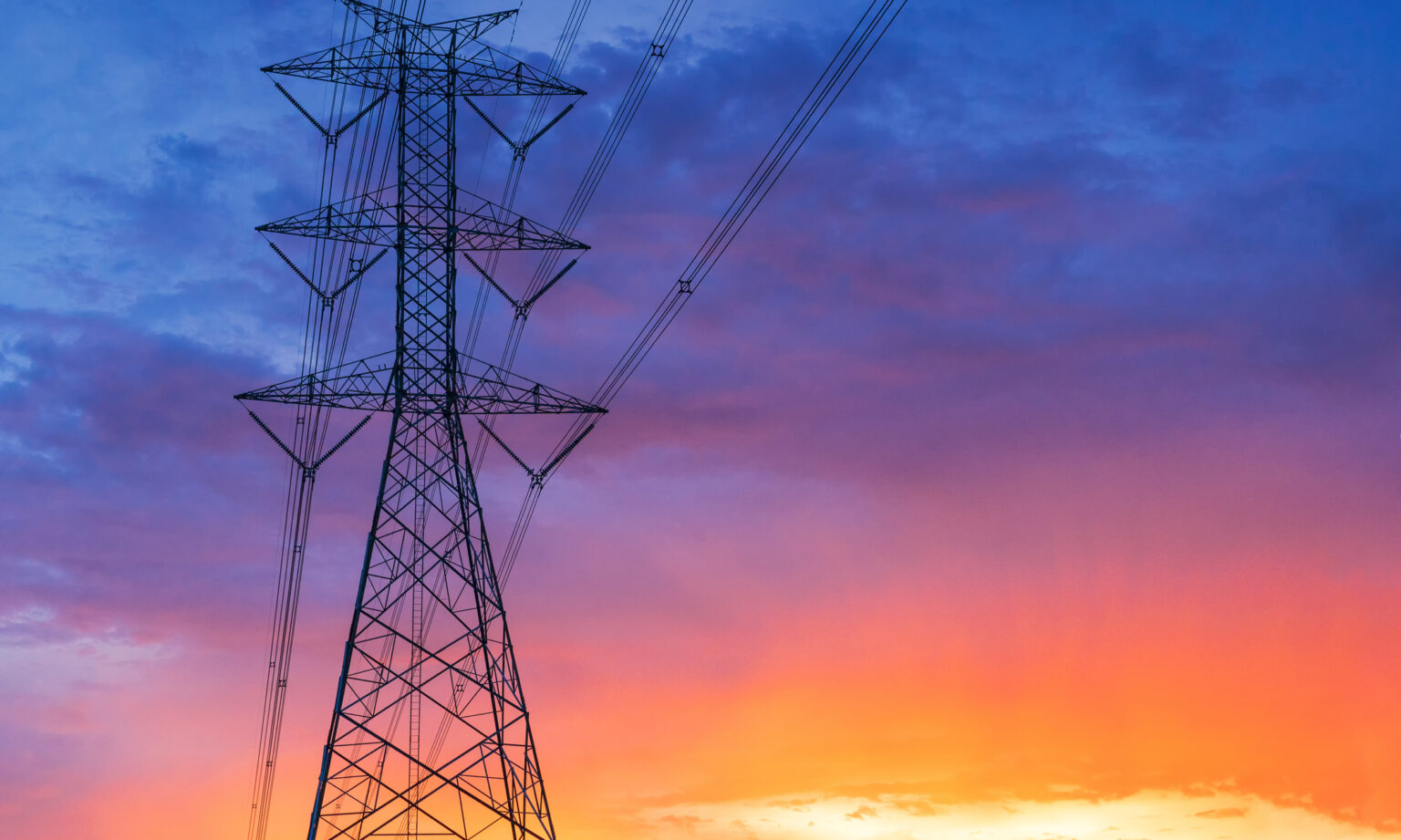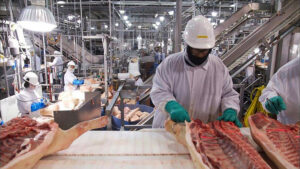9:00
News Story
Fight over transmission towers for reliable energy rages across Missouri
WASHINGTON — From the beige-trimmed kitchen window of her home in Missouri’s Monroe County, Marilyn O’Bannon can look out across more than a half-mile field of crops.
But in the future, that view may include electrical transmission towers and lines, which could be along the route of a proposed massive federal power transmission corridor that would stretch nearly 800 miles across the Midwest, including through Missouri.
There is a national debate over how to address the aging electrical system, and some of this conversation is playing out in the farmland of Missouri. The federal government wants to embark on a nationwide plan to increase the reliability of electricity and reduce consumer costs.
The effort is sparking objections from Sen. Josh Hawley, R-Missouri, and some Missouri landowners who say the corridor would amount to an unfair land grab.
At stake, proponents say, is everything from the ability to reliably charge your phone to ensuring the power stays on for life-saving medical equipment. The reliability of the region’s power supply was highlighted in late August when Southwest Power Pool, a regional transmission operator that serves 14 states in the central U.S., including parts of Missouri, issued an emergency alert about the impact of power use during recent high temperatures across the area.
But the proposed transmission lines could be disruptive to farmers and landowners.
“Agriculture is threatened by a lot of things, and it’s not an easy life to begin with,” said O’Bannon, whose Monroe County property is about an hour’s drive northeast of Columbia. “I think it’s really hard for a lot of people to put themselves in the shoes of someone who is trying to depend on their land for a living.”
In May, the U.S. Department of Energy released a preliminary list of 10 locations across the country where federal officials say there is an urgent need to increase the regional capacity of electrical transmission lines. Based on the department’s assessment, the region is at the mercy of frequent and longer power outages from extreme weather and higher electricity prices.
Midwest-Plains corridor
One of these proposed corridors, part of the DOE’s National Interest Electric Transmission Corridors, would be built across a stretch of land 780 miles long and five miles wide that extends across Kansas, north-central Missouri, Illinois and a portion of Indiana.
The DOE says constructing this “Midwest-Plains” corridor and the other regional corridors elsewhere in the country will improve energy reliability and resilience, lower congestion and consumer costs, increase capacity to meet future demand and advance clean energy integration.
But Hawley and some Missouri landowners say the proposal is just the latest in a series of attempts to build power lines across the state on land that is currently privately owned.
Opponents’ biggest concern is eminent domain: the government’s power to convert private property into public use with fair compensation when there is a compelling public need to do so.
Hawley has repeatedly criticized both the national transmission corridor and another transmission project in recent months, making speeches in Senate hearings and introducing Protecting Our Farmers from the Green New Deal Act that would prohibit national efforts to overrule state regulators in siting electric transmission facilities.
The senator is using his bully pulpit to denounce an earlier transmission line project, called the “Grain Belt Express,” whose route falls in line with the potential proposed Midwest-Plains corridor.
Hawley has dubbed the project as “highly controversial in the state of Missouri” and one that is “vociferously opposed” by Missouri farmers.
In a recent letter to U.S. Energy Secretary Jennifer Granholm about the Midwest-Plains corridor, Hawley accused her department of weaponizing their authorities to benefit clean energy companies. In response to the Missourian’s requests for an interview, Hawley’s office referred the Missourian to news releases and videos of the senator’s previous statements.
Farmers’ concerns
The Missouri Farm Bureau shares many of Hawley’s concerns. Dan Engemann, the organization’s director of regulatory affairs, said this energy transmission corridor is being built on the backs of landowners.
“The frustrating part about this is we hear so many times … that this is for the public good,” Engemann said. “We as landowners, farmers and ranchers in Missouri … we’re part of the public as well, so you can’t exclude us from that group.”
O’Bannon, the western district commissioner for Monroe County, has been on the frontlines of this battle since the end of 2013, long before the DOE released its map of the Midwest-Plains corridor for potential towers and lines across Missouri in May. Her opposition began with the Grain Belt Express, which received final approval from Missouri state regulators as of October 2023.
The Grain Belt Express is being challenged by the Missouri Farm Bureau, the Missouri Soybean Association and the Missouri Cattlemen’s Association on Sept. 25 in Kansas City.
James Owen, executive director of Renew Missouri, a nonprofit organization advocating for the project, said that companies’ interests versus landowners’ interests are often a “big ugly fight.”
He grew up a “farm kid” and has transmission lines running through his farm in southwest Missouri; he is not insensitive to landowners’ concerns.
DOE’s proposed Midwest-Plains corridor appears to encompass the path currently planned for the Grain Belt Express. If the Grain Belt Express ends up being located in a finalized DOE transmission corridor — and if it meets the eligibility requirements — the project may have access to key federal financing and permitting tools such as public-private partnerships, direct loans and federal construction permits, a DOE spokesperson said.
From the maps, O’Bannon said that the proposed path of the Midwest-Plains corridor announced in May appears to take a five-mile wide swath of land across the farm she shares with her husband, the farm her son rents, her brother’s farm and her parents’ farms: a property originally settled in 1873.
Striking a balance
At issue is balancing the concerns of landowners with the need for more transmission lines to keep up with the nation’s increasing power demands. About 70% of the U.S. electrical grid is over 70 years old, said Otto Lynch, vice president and head of Power Line Systems at Bently Systems, an infrastructure engineering software provider, based in Exton, Pennsylvania.
These transmission structures — with footprints about 40 feet by 40 feet — would be roughly four football fields apart. Cattle can graze around them and landowners can continue to farm, Lynch said, but there will be some limitations to ensure operational safety.
However, O’Bannon is concerned that farmers won’t be able to grow crops in the areas designated for transmission infrastructure. This is because of the destruction of topsoil, soil compaction and erosion from vehicles and excavation for construction.
O’Bannon is not against renewable energy, but she believes that while eminent domain has a place, it’s overstepping its boundaries in this project.
Tyson Slocum, an energy program director at Public Citizen, a national nonprofit consumer advocacy organization that favors clean energy, doesn’t see this as “jackbooted thugs descending on poor innocent farmers to forcibly take their land away,” Slocum said. “There is a process of evaluation, consultation and then decision.”
Projects like this have potential merit because they will deliver more renewable energy to the region, Slocum said. He hopes that the project engages in transparency and public participation to accommodate landowners.
The DOE is currently reviewing information submitted by the public during phase two of the transmission designation process, a spokesperson said. Phase three is expected to begin in the fall and will include DOE-led community engagement activities focused on potential transmission corridor locations.
Read details of the Department of Energy’s proposed Midwest-Plains corridor across Missouri at the Grid Deployment Office’s website.
This story originally appeared in the Columbia Missourian. It can be republished in print or online.
Our stories may be republished online or in print under Creative Commons license CC BY-NC-ND 4.0. We ask that you edit only for style or to shorten, provide proper attribution and link to our website. AP and Getty images may not be republished. Please see our republishing guidelines for use of any other photos and graphics.





